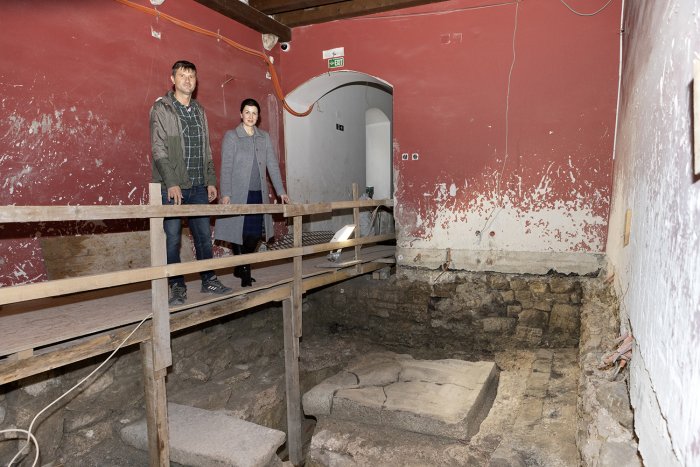Unexpected Discovery Of Roman Baths Under Split City Museum In Croatia
Archaeologists assisting with the restoration works of the Split City Museum in Croatia have made a surprising discovery. Beneath the building, they found large Roman baths and mosaics.
Researchers did expect to make some minor archaeological discoveries, but not large Roman thermal baths!

One of the goals of the European project called “Palace of Life, City of Change” is to reconstruct the ground floor and the installation of a lift in the Split City Museum.
Located inside the old Papalic Palace, the museum is visited by many, featuring various fascinating exhibitions telling the story of the rich history of Split and its citizens.
The ongoing restoration works have been carried out according to the plans, and archaeologists enjoyed the minor discoveries they made at the site. It was a huge surprise and sensation when they suddenly unearthed massive Roman structures.
Total Croatia News reports that “in the former museum reception, the structure of the ancient floor, underfloor heating, an opening for warm air connected to the stove, a praetorium, an opening inside the underfloor heating, and a furnace construction were all discovered.

A deeper continuation of digging revealed an ancient mosaic in the southern room, then a continuation of the ancient wall in the central room with a pool and an oil and grape press.
In the northern room, next to the staircase, a pool with a white mosaic floor was also found – the head of archaeological research from the Neir company, Nebojša Cingeli, revealed.
Cingeli explained that the discoveries underneath the Papalic Palace are related to water because they are pools and cisterns, so it is easy to conclude “that there were once thermal baths in the northern part of Diocletian’s Palace as well”.
This comes as somewhat of a surprise for both historians and archaeologists, because for years it was assumed that the northern part of Diocletian’s palace housed barracks and training grounds for Diocletian’s personal guard and staff.”
The plan is to holed the excavated rooms open to the public. Before visitors can come it is important to strengthen the walls and secure the structure. Above the open archaeology site, architects will design a design a system of walkways that will allow movement above the site.
“The selection of exhibits, expanded legends/descriptions and other museological items created a narrative thread of the exhibition that starts from before Diocletian’s time, the connection with Salona, ancient Split, all the way through to the early Middle Ages to the period of the autonomous commune.

“Showing our visitors the “living past” that speaks to us through the original layers of centuries long gone by adds insurmountable value and legacy to future generations. It is up to us to carry this out in the best and most professional way,” concluded the director of the Split City Museum.”